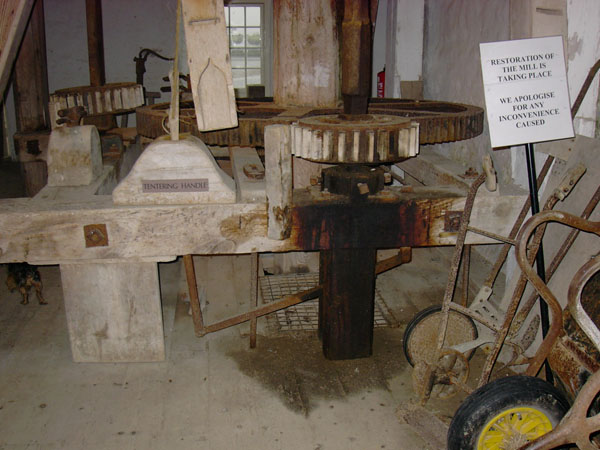This photo was taken on the first floor of the four-floor mill, with the water wheels out of sight in the basement. The wheels rotate about horizontal axes, and this motion is translated into the rotation of a vertical axis by two beveled gears. One gear is attached to the side of the water wheel and the other, the wallower, is attached to the bottom of the telephone pole-sized vertical upright shaft you can see in the back of this picture. Another large gear (the spur wheel) is attached to the top of the upright shaft and can be seen almost touching the sign on the right. The smaller gears (foreground and left) are called stone nuts, and are fastened to the ends of other vertical shafts going up to the second floor, where they drive the millstones. There are three mill stones per upright shaft on the second floor. Usually, only one millstone was engaged and grinding at a time. Note that the stone nuts have a metal frame and replaceable wooden teeth. The meal fell from the millstone down a rectangular wooden chute hanging down to the right and behind the tentering handle. The miller would monitor the fineness of the meal, and adjust the distance between the millstones with the tentering handle (middle foreground). The meal was bagged on this floor, and the bags were then hoisted up to the fourth floor and their contents dumped into bins, which fed other milling operations on the second floor. The attached diagram shows how a bag would be hoisted up three times and pass downward through three processes before leaving the mill.
NEXT
LIST
